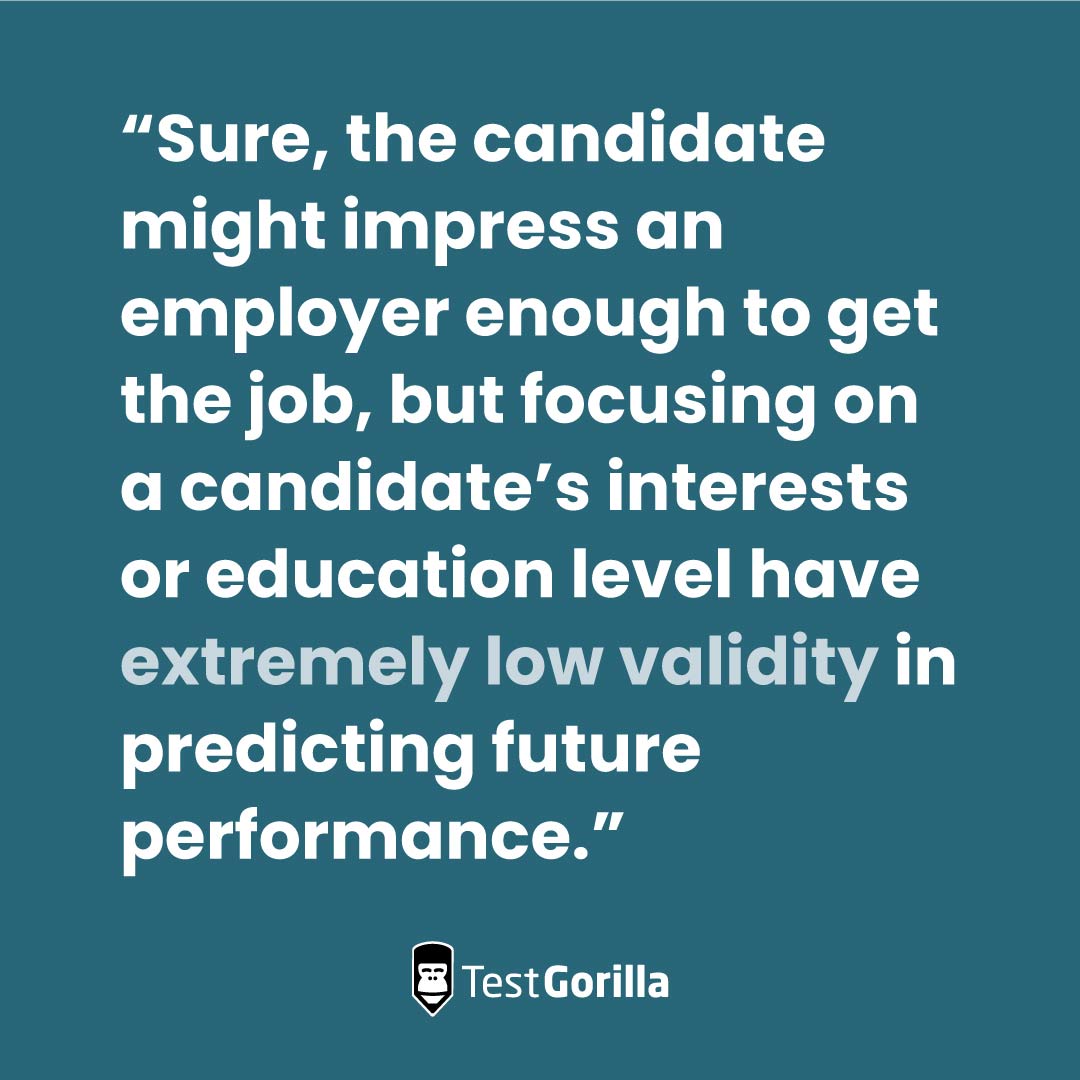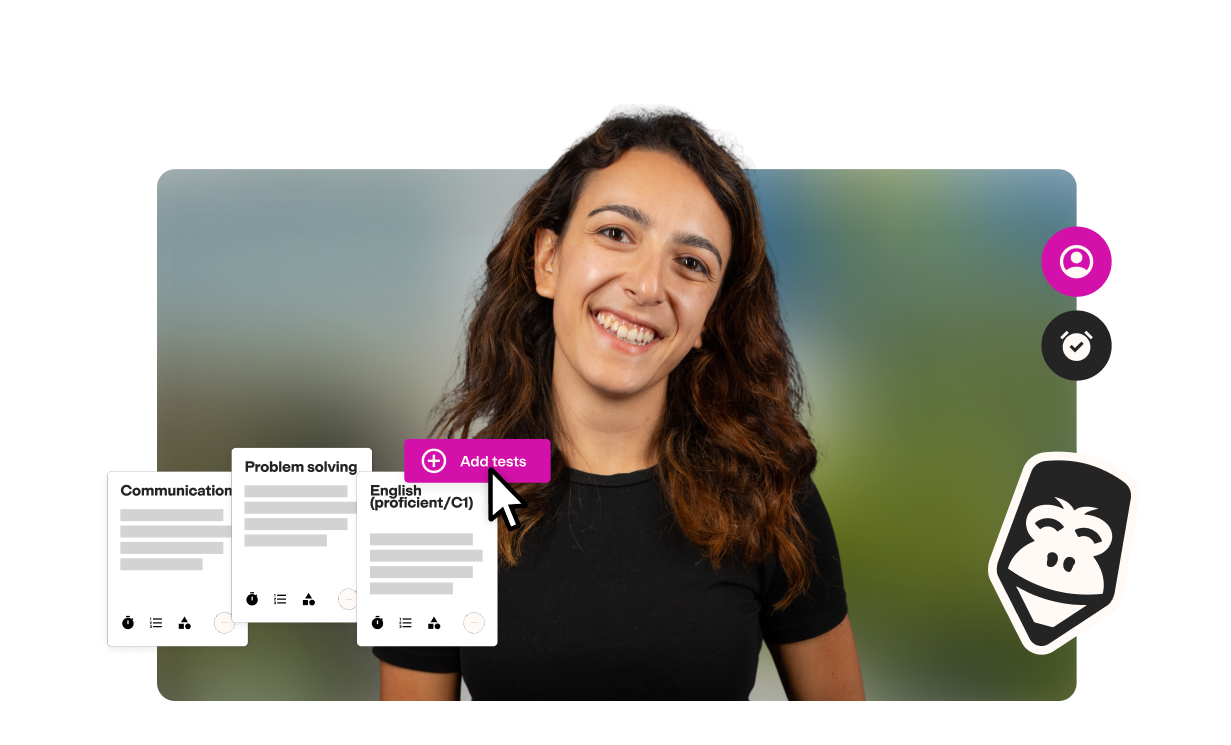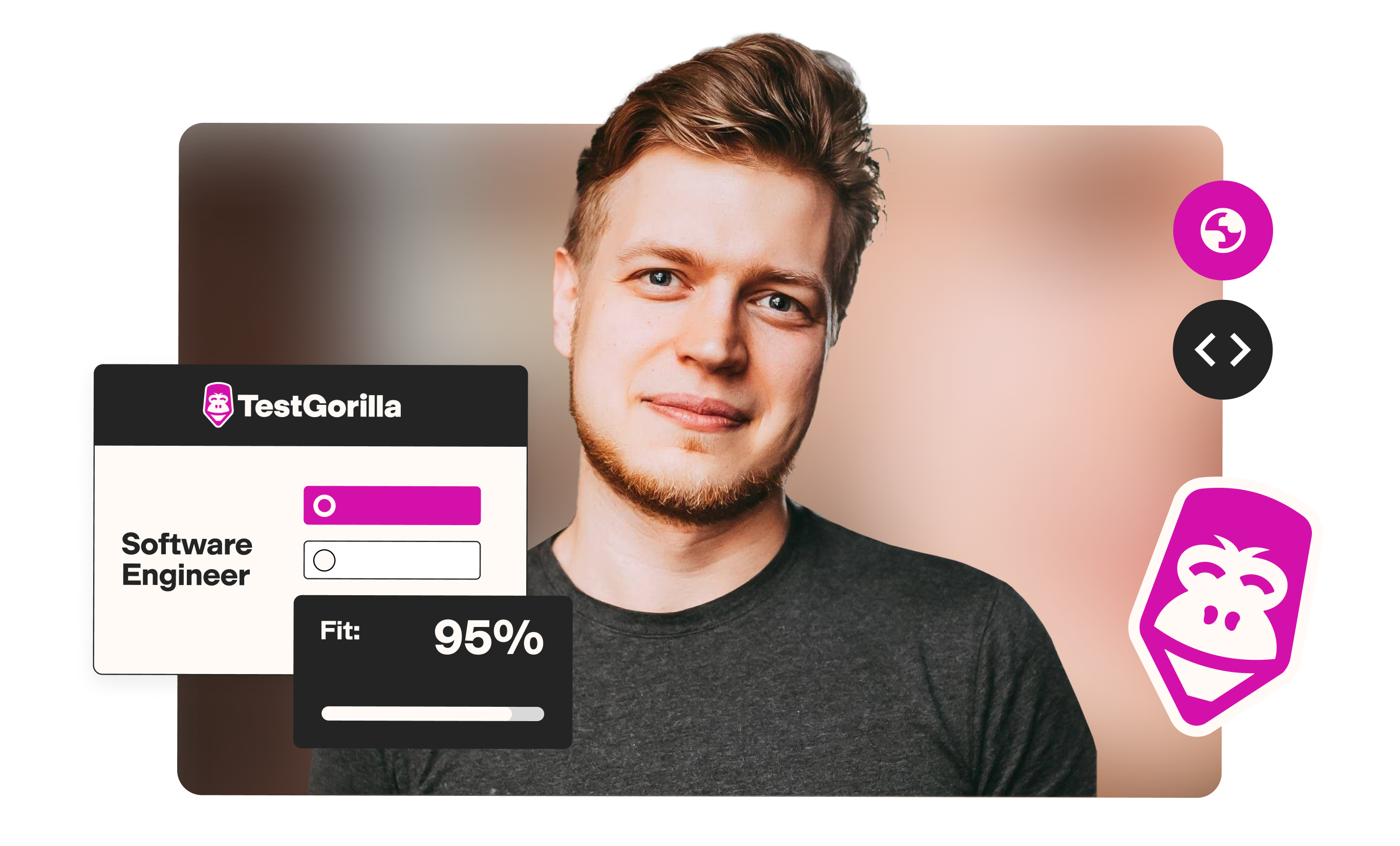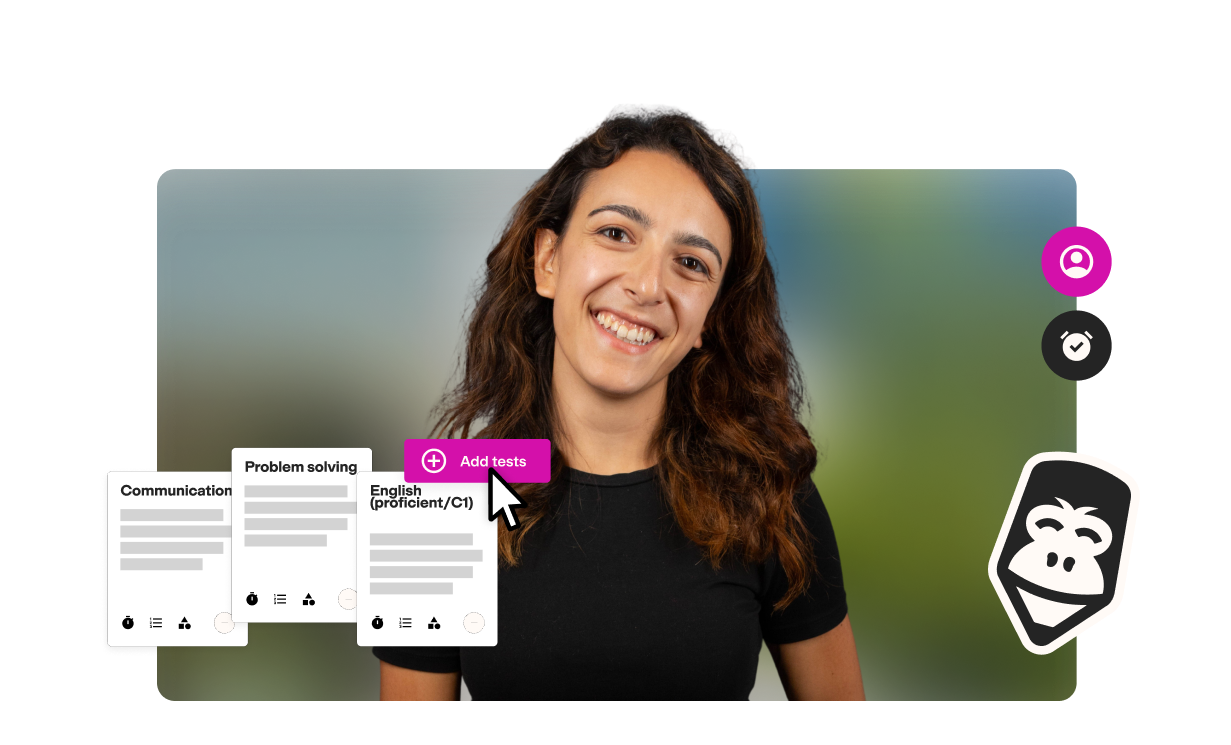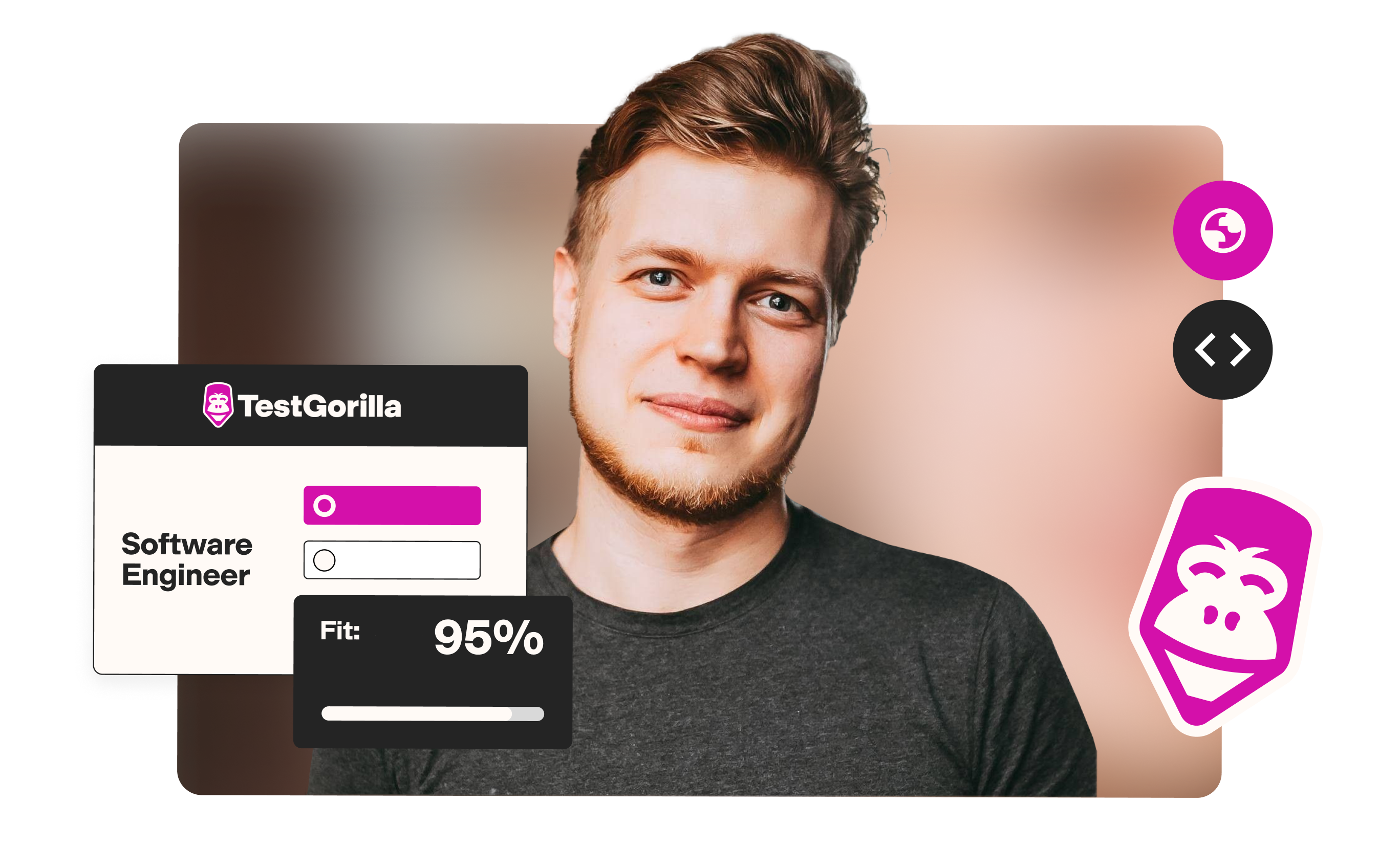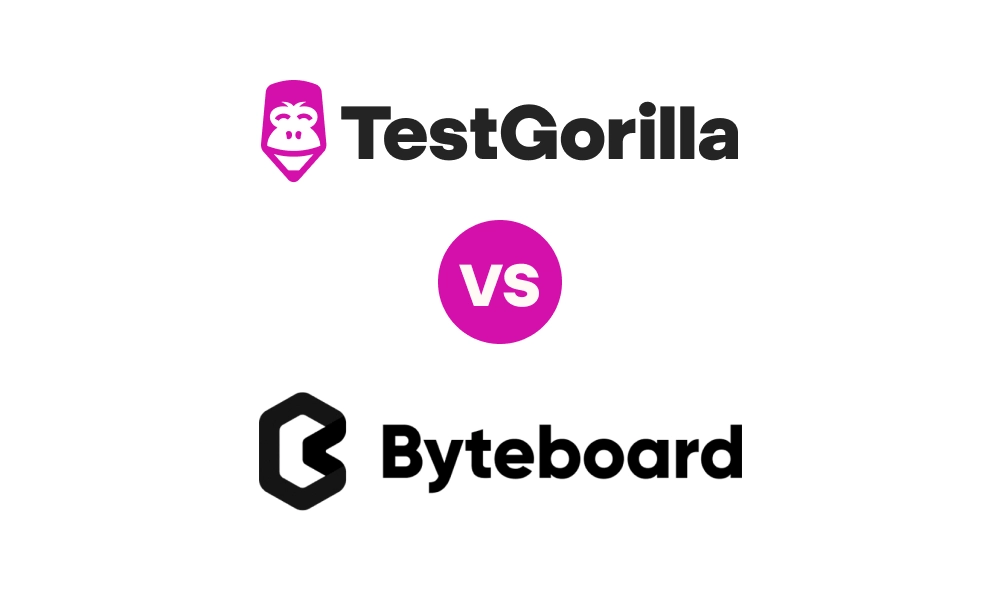What should hiring managers and recruiters look for in candidates during the hiring process?
Traditional hiring methods offer an easy answer: Look for candidates who graduated from top schools with good grades, have relevant experience from big-name companies, have the right connections, and perform well in an interview.
But none of these traditional hiring metrics are accurate predictors of job performance. They are actually minefields for unconscious bias, discrimination, and nepotism.
Hiring managers should collect hard data about a candidate’s cognitive ability and skills instead of using unreliable metrics like degrees, resumes, and self-reported prior experience.
Skills-based hiring is the new way to recruit that offers a wide array of assessments such as cognitive ability tests, personality tests, culture tests, and role-specific tests to accurately predict job performance.
Although this approach helps employers hire the right candidates, skill-based hiring is not one-size-fits-all.
It’s a nuanced hiring strategy that accounts for the fact that different jobs require different skills and gives employers the tools to predict which candidate has the right skills to succeed in a particular role.
Table of contents
3 traditional success predictors and their skills-based alternatives
Traditional hiring methods are ingrained in our culture, but they’ve become outdated.
Relying on a candidate’s resume, experience, personal connections, and interview performance may seem like a logical way to hire, but this strategy doesn’t actually benefit the employer or the candidate.
Sure, the candidate might impress an employer enough to get the job, but focusing on a candidate’s interests or education level have extremely low validity in predicting future performance.
This potentially saddles an employer with a bad hire and puts the candidate in a role they aren’t prepared for.
Let’s take a closer look at how traditional hiring methods use flawed approaches to predict job performance.
1. Traditional hiring approach: Relying on experience in resumes
Hiring someone who has experience performing in a similar role seems like a common sense predictor of job success.
Surprisingly, this traditional hiring method actually has little to do with predicting future performance.
According to a 2019 meta-analysis by Chad H. Van Iddekinge, there is no correlation between a candidate’s previous work experience and their future job success.
Here’s why:
Culture change: A candidate may have thrived at their previous workplace because of the unique culture that existed there. Even if you assess that a candidate will most likely mesh well with your company culture, the candidate may not be able to adjust.
Job titles can be deceiving: The same job title in two different companies may have vastly different roles. Nearly three-quarters of jobseekers say they felt regret once they realized that their workplace was different than they were led to believe.
How do employers typically learn about a candidate’s experience? Reading resumes, of course.
Our own research shows that more than half of surveyed employers could not tell from reading a candidate’s resume if the applicant had the skills needed for the job.
To put it simply, resumes are not the best tool for hiring.
A resume can organize a candidate’s experience and tells a story about what that candidate has accomplished in their work history.
But this story does not provide any hard facts about a candidate’s skills, personality, cultural contribution, or cognitive ability.
Resumes are:
Marketing documents: They are intended to present the candidate in the best possible light, emphasizing strengths and downplaying weaknesses.
Difficult to rank objectively: Nearly half of the survey respondents said it was hard to measure which resumes were the best. The only quantifiable metric in most cases was years of experience, which tells an employer nothing about how a candidate will actually perform.
Prone to bias: A candidate’s name, address, education, past employment, time gaps, and duration of employment all paint a picture of a candidate that can trigger a hiring manager’s unconscious bias.
The alternative: Role-specific tests and culture add tests give an accurate representation of employee fit
Experience on a resume does not show a candidate’s actual skills, but situational judgment tests do.
Situational judgment tests are more role-specific than cognitive ability tests, presenting candidates with work-related problems or scenarios and assessing their responses.
Skills-based hiring uses situational judgment tests to acquire hard data about a candidate’s actual skill level.
What do these have to do with a candidate’s experience?
For one, candidates can rely on their past experience to figure out how to navigate a particular situation that appears in the test. But whether or not the candidate has encountered this situation before reveals very little about whether or not they can handle it effectively.
Instead of asking generic questions that may paint a general picture about a candidate’s skills, these tests directly relate to the needs of the position and measure the following skills:
Leadership skills
Resilience
Organization and planning
Decision-making
Communication skills
A candidate may list these skills on their resume and provide examples based on their diverse work experience. A test proves whether or not they have them.
Say you’re hiring a strategy consultant and you need someone with a great business acumen. The Business Judgment test evaluates the following skills:
Strategy and innovation
Financing
Sales and marketing
Mergers and acquisitions
If you want to avoid the negative impacts of culture change, you can implement a Culture Add test to measure how a candidate’s behaviors and values align with your own to determine their future success.
These tests are used for any type of job where situational awareness and an innovative culture are important parts of an organization’s day-to-day.
2. Traditional hiring approach: Hiring based on personal connections
Estimates say that around 70% of all job openings are not made public.[1]
In fact, research shows that more than three-quarters of jobs are filled through personal connections and networking.
There is no evidence to suggest that a candidate’s personal connection to an employer or hiring manager can predict their future job success.
Hiring candidates based on who they know is a hiring approach rife with bias and disparities in opportunity – more fortune for the fortunate.
This is because making connections with people who look and think the same as we do is hard-wired into our brains. This tendency, known as homophily, may be a result of the comfort we feel when we’re around people similar to us.
Homophily plays a significant role in how humans form bonds with each other. Although this phenomenon may help humans make good friends, it doesn’t help them make good hires.
Jeff Weiner, the CEO of LinkedIn, refers to the bias of hiring personal connections as the “network gap.” Research shows that people who are referred for a job are nine times more likely to get hired.
But this bias in the hiring process, even when the referral is earnest, has proven to lead to groupthink that decreases innovation and productivity.
With nearly half of American companies saying they are experiencing a talent shortage, hiring candidates based on personal connections does not appear to be making a dent.
And why would it? A candidate who is familiar with someone at your company provides zero evidence that that person is a skilled fit for the actual job.
Networking itself is not bad if done correctly. There is networking etiquette that, if followed, can actually help grow your talent pool.
When an employer is approached by a personal connection, or someone they met through their network, there’s nothing wrong with considering that person for a job opening – as long as they can prove they have the skills to do the job.
The alternative: Personality tests predict how an employee will actually behave
Companies may feel more comfortable hiring candidates they know personally because there is familiarity and shared values.
For example, an employer may think: Why should I hire this person that I know little about personally when I have known Josh for years?
The answer: Nothing about their personal relationship can prove that candidate’s skills or predict their behavior.
If personality is an important consideration for an employer, personality tests are a great tool.
Personality tests measure and identify a candidate’s personality traits, behavioral tendencies, emotional responses to certain situations, or what motivates them to succeed.
These tests are the most effective when they are paired with other cognitive abilities tests and role-specific tests, adding insight and clarity to a candidate’s behavior, values, and skills.
When implementing personality tests, it’s important to:
Use the proper personality test: If you are testing how a candidate perceives the world and makes decisions, you should use the 16 Types test instead of something like the culture add test, for example.
Apply your insights correctly: Don’t let personality traits that have proven to benefit the job opening be affected by your personal bias. For instance, if you are filling a decision-making position that requires some degree of bluntness, don’t dismiss them for seeming unagreeable.
Use other tests too: You should never use a personality test as the deciding factor in your hiring process. Skills-based hiring uses a blended approach of different cognitive abilities tests, role-specific tests, structured interviews, and situational judgment tests to accurately predict job success.
The Big 5 (OCEAN) test, for example, is a personality test that assesses five overarching personality traits to gain insight into employee behavior:
Personality trait | High scorers | Low scorers |
Openness | Curious, creative, open-minded, and excited about new experiences. | Tend to dislike change and are more logical thinkers. |
Conscientiousness | Disciplined, goal-oriented, and always planning ahead. | Don’t rely on organizational structures to thrive, but can struggle with deadlines. |
Extroversion | Tend to be more social, energized when around others, and love being the center of attention. | More introverted, prefer working alone, and can struggle with collaboration. |
Agreeableness | Generally have a lot of empathy, concern, and patience for other people. | Tend to be more self-interested, logical, blunt communicators, and can be manipulative at times. |
Neuroticism | Can be anxious, lack self-confidence, and struggle to cope with obstacles. | Tend to be more laid back and not worry as much about dealing with problems. |
Research shows that conscientiousness is the strongest predictor of job success. Some employers prefer the Big 5 (OCEAN) test because it determines which candidates score highly in that category and which development opportunities are best suited for potential employees.
3. Traditional hiring approach: Conducting unstructured interviews
A candidate walks into the room interview and oozes confidence. They have a great smile, appear knowledgeable about your business, and act a lot like one of your favorite employees.
After some back-and-forth, you quickly move to discussing compensation details with them. This sounds like a slam dunk, right? If you’re comfortable hiring someone who hasn’t proven that they can do the job, then sure.
When it comes to predicting job success, your hiring practice needs to rely on measurable data that shows a candidate’s actual skills, personality, and cognitive abilities. Otherwise, you’re hiring someone you like, not someone who’s fit for the job.
Hiring managers can fall victim to their own bias when they use unstructured interviews.
Unstructured interviews:
Are different every time
Put questions in a different order each time
Are not necessarily focused on the skills needed for the job
Are not standardized and are difficult to compare with others
Don’t have clear benchmarks for successful answers
Traditional hiring methods that rely on unstructured interviews fail to predict job success because they rarely focus on the core competencies of the role and invite bias into the process.
Let’s say you need to hire a programmer, for example. Traditional hiring practices would typically run an unstructured interview where the hiring manager judges the candidate on the first impression they make.
The hiring manager can’t help it; interviewer bias is quite common. However, it’s one of the biggest reasons behind bad hires.
A first impression has nothing to do with whether that programmer is familiar with building cyber security code or can design software programs.
The alternative: Structured interviews identify skills and eliminate bias
Are all interviews out the window, then? Not exactly. You just need to be a little more standardized with them.
Structured interviews predict performance at a rate of 50% compared to 20% for unstructured interviews.
When using structured interviews:
Questions are formulated in advance
Questions relate to core competencies for the job
Interviewers know which types of answers are preferred
Questions are asked in the same order
Interviewer asks behavioral and situational questions
If you are hiring a social media manager to increase your TikTok following, for example, you can try asking the following questions to each candidate in a structured interview format:
Are you comfortable using TikTok Creator Tools?
What is your experience with influencer marketing strategies?
How would you use TikTok to build our customer base?
What recent TikTok trends have you had the most success with?
These questions are bias-proof because they are strictly related to a candidate’s competencies as opposed to what the candidate has in common with the interviewer.
Behavioral interviews are a crucial component in predicting job success because they give the hiring manager insight into how a candidate has responded to challenges in the past.
For the social-media manager example, you could ask: Can you tell us about a time your TikTok content strategy failed to gain any traction and how you responded to that?
With skills-based hiring, the interviewer already knows the kind of answers they are looking for that best fit the job’s responsibilities.
Here is a list of 50 behavioral questions to ask candidates when adopting a skills-based hiring approach.
Is there a one-size-fits-all approach to predicting job success?
The short answer is no.
There isn’t a cookie-cutter approach to predicting job success, and predictors vary from role to role.
Skills-based hiring takes into account the nuance of each individual role and industry by blending different tools and assessments to measure success.
Multi-measure testing is the best way to utilize skills-based hiring because it identifies candidates as unique individuals with a variety of skills that may not show up in one test but shine through in another.
Testing skills, behavior, situational awareness, and personality traits is part of a holistic approach to hiring that reimagines work as a set of responsibilities that require different competencies.
Let’s say you are hiring a graphic designer, but the candidate scores lower on the “Extroversion” portion of the OCEAN test. That does not mean that they should be disqualified, because the bulk of their work responsibilities can take place remotely and with minimal interaction with other people.
If they also score lowly for “Conscientiousness,” that may end up being a strength rather than a weakness. That’s because conscientiousness can impede spontaneity, creativity, and innovation – all of the skills you would hope to find in a graphic designer.
If the candidate performs poorly in an interview (i.e., their answers are vague and imprecise or they take a while to understand a question), but performs well in the cognitive ability test, you should take all of that information into consideration before making a sweeping judgment about their fit.
It’s important to note that what constitutes a good worker is constantly changing. The Covid-19 pandemic, rapid changes in technology, and evolving consumer needs all inform how to best predict job success.
It’s up to the employer to utilize the tools of skills-based hiring to meet the needs of their job openings and their business as a whole.
Accurately predict success with skills-based hiring
Traditional hiring methods fail to accurately predict job success.
By relying on inaccurate, bias-prone metrics such as degrees, resumes, personal connections, and unstructured interviews, employers are contributing to the perceived talent shortage they’re trying to avoid.
Skills-based hiring strategies implement different skills and performance assessments to identify which candidates will succeed in particular roles.
Cognitive ability tests, situational judgment tests, personality tests, and structured interviews all predict job success with accuracy as long as they’re used correctly and with a job’s unique needs in mind.
For more info, learn how predicting job success with skills-based hiring can further benefit your business in ways such as reducing total time-to-hire and total cost-to-hire.
Source
Kaufman, Wendy. (February 3, 2011). “A Successful Job Search: It’s All About Networking”. NPR: All Things Considered. Retrieved April 24, 2023. https://www.npr.org/2011/02/08/133474431/a-successful-job-search-its-all-about-networking
Related posts
Hire the best candidates with TestGorilla
Create pre-employment assessments in minutes to screen candidates, save time, and hire the best talent.
Latest posts
The best advice in pre-employment testing, in your inbox.
No spam. Unsubscribe at any time.

Hire the best. No bias. No stress.
Our screening tests identify the best candidates and make your hiring decisions faster, easier, and bias-free.
Free resources
This checklist covers key features you should look for when choosing a skills testing platform
This resource will help you develop an onboarding checklist for new hires.
How to assess your candidates' attention to detail.
Learn how to get human resources certified through HRCI or SHRM.
Learn how you can improve the level of talent at your company.
Learn how CapitalT reduced hiring bias with online skills assessments.
Learn how to make the resume process more efficient and more effective.
Improve your hiring strategy with these 7 critical recruitment metrics.
Learn how Sukhi decreased time spent reviewing resumes by 83%!
Hire more efficiently with these hacks that 99% of recruiters aren't using.
Make a business case for diversity and inclusion initiatives with this data.

